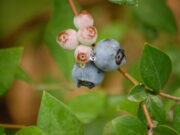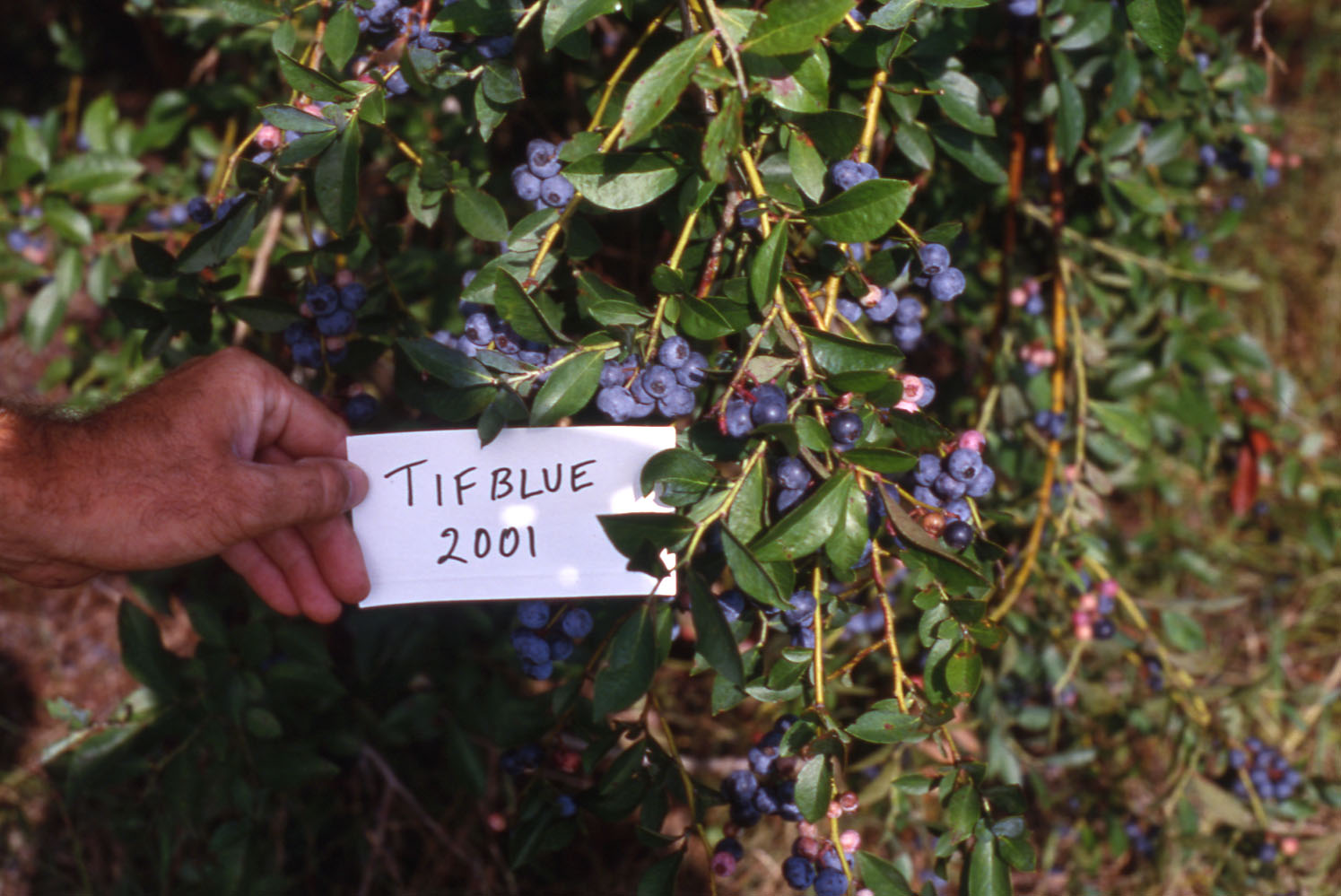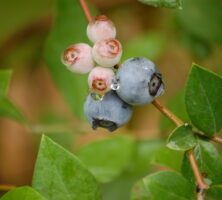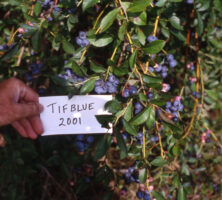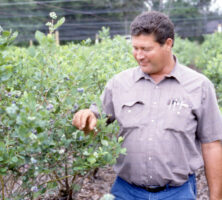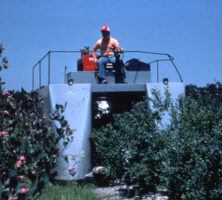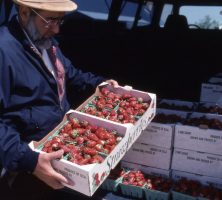The Georgia blueberry and strawberry industries are dynamic enterprises of relatively recent development. The blueberry industry is concentrated in the flatwoods of southeast Georgia and ships fruit all over the world. The strawberry industry is spread throughout the state and caters mainly to Georgia customers.
Blueberries
The development of the blueberry industry is an interesting story. Local fishermen in Brunswick and Toomsboro had collected some of the best wild berries from the Satilla and Withlacoochee rivers of south Georgia. These selections were crossed with selections from west Florida to create cultivars (cultivated varieties) of rabbiteye blueberries (Vaccinium ashei). Since 1944 the University of Georgia has maintained a blueberry breeding program and released fifteen cultivars of rabbiteye blueberries. These cultivars have formed the basis for the Georgia blueberry industry.
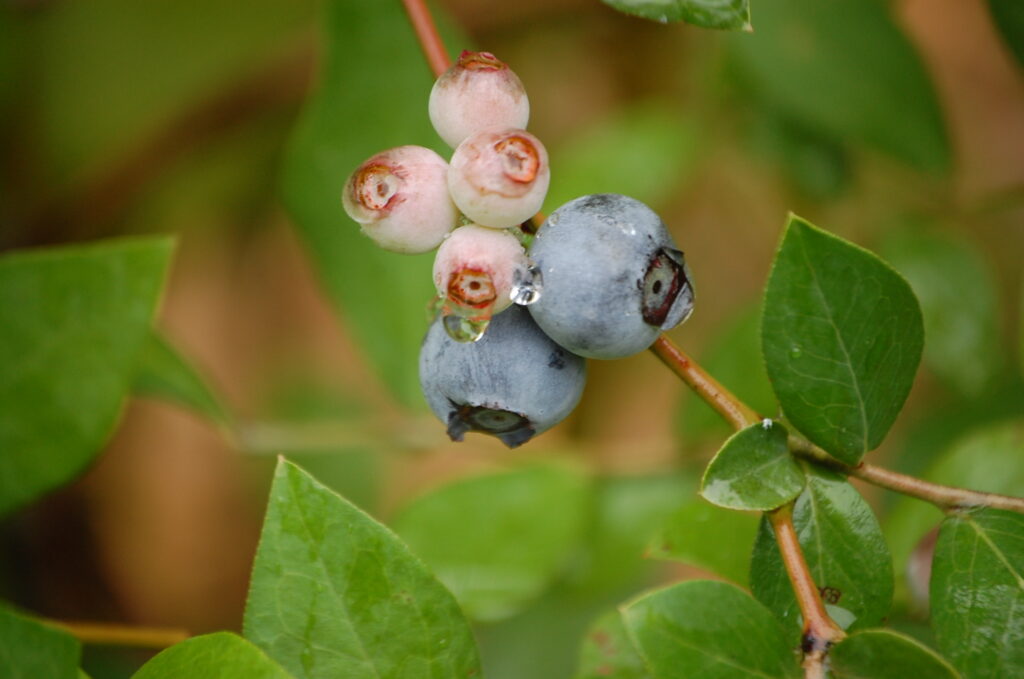
In the early 1970s the first blueberry cooperative was formed in Alma. Today there are two primary market outlets for distant shippers of blueberries: one in Michigan and one in Florida.
Starting in the mid-1990s, southern highbush blueberries (Vaccinium corymbosum hybrids) have been grown in significant quantities in Georgia. In south Georgia southern highbush blueberries ripen in April and May, and rabbiteyes ripen in late May, June, and July. Today more than 200 growers have planted about 20,000 acres, concentrated in the southeastern corner of the state, from Valdosta (Lowndes County) eastward to Nahunta (Brantley County) and northward to Baxley (Appling County). Packing plants export the fruit to markets throughout the United States, Canada, and Japan. About 30 to 50 percent of the crop is sold fresh, and the rest is processed into frozen berries. Mechanical harvesters are used to gather the crop for the processed market. Pick-your-own and direct-sales blueberry farms are scattered throughout the state as well. In 2016 Georgia produced 70 million pounds of blueberries valued at $88 million. Georgia frequently ranks among the top five in the nation in acreage and production of cultivated blueberries.
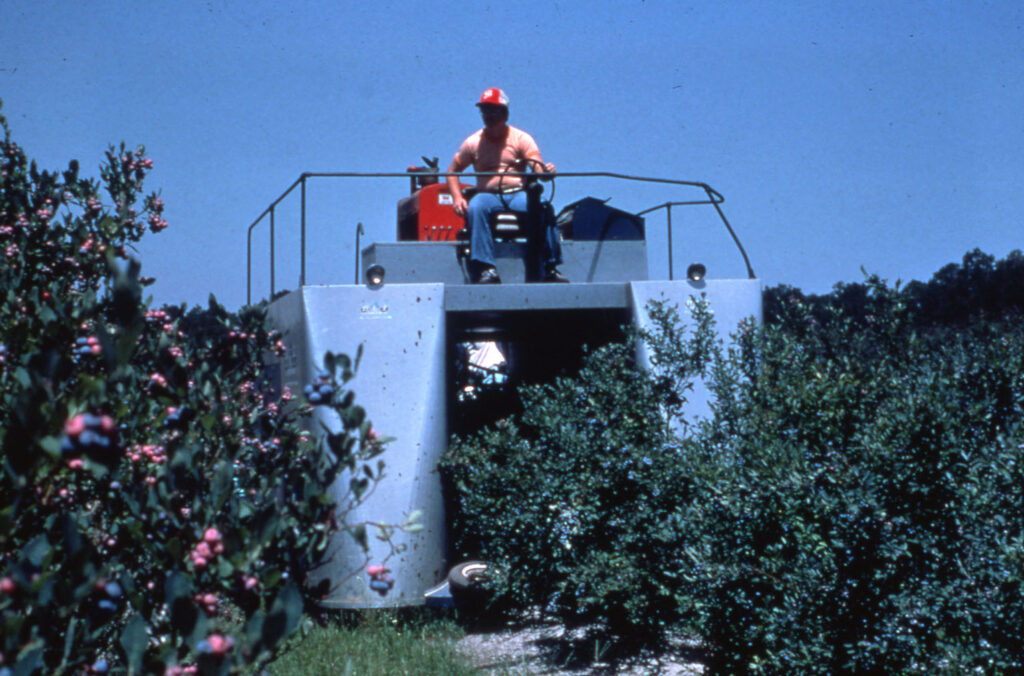
Blueberries require a strongly acid soil for good growth. Rabbiteye blueberries perform best on soil with a good organic matter content (2 percent or more), and southern highbush berries require a higher organic matter soil (3 percent or more) for best growth. Most growers plant on sites rich in organic matter or mix peat moss or milled pine bark with the soil.
Strawberries
The Georgia strawberry industry primarily consists of small family farms that offer fresh, “vine ripe” berries as a pick-your-own or direct-sales crop. In 2012 there were eighty-eight farms in operation, with a total acreage of about 140. The 2016 farm gate value (the value of the crop as it leaves the farm) was about $9.7 million.
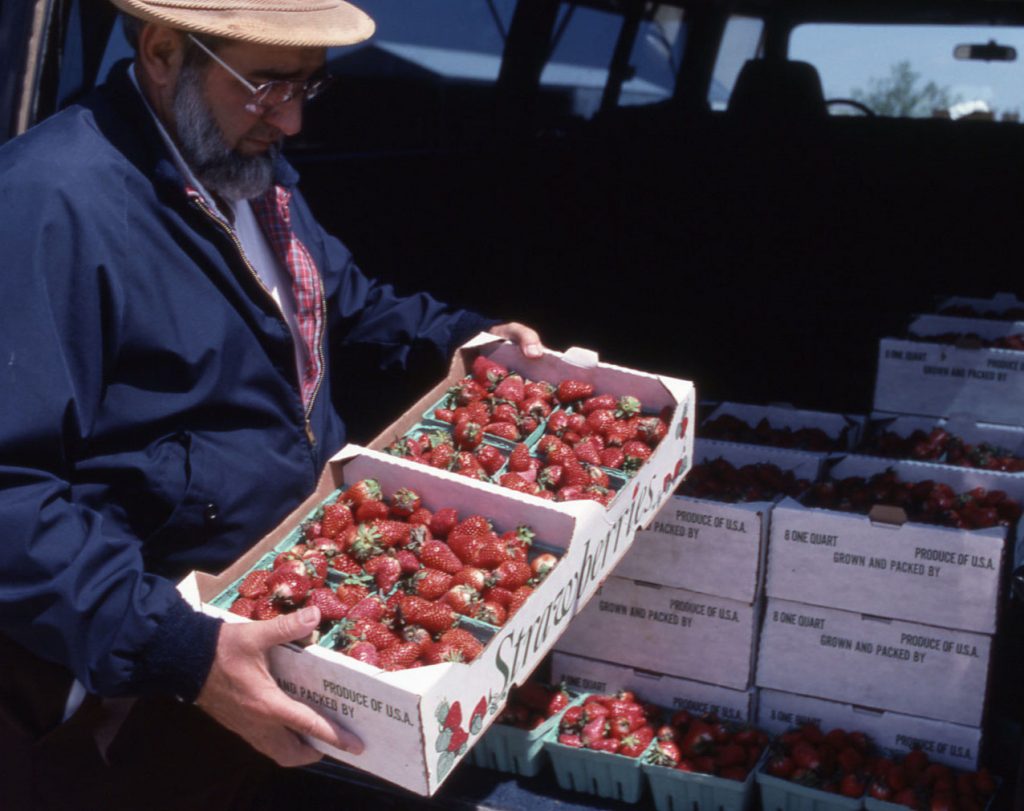
Chandler and Camarosa, developed in California, are the two most popular strawberry cultivars grown in Georgia. Both produce large, tasty fruit. Normally strawberries are grown as annuals in Georgia, with drip irrigation under plastic mulch. The raised beds and plastic mulch help to keep the leaves and fruit clean, reducing plant diseases and improving fruit quality. The crop ripens primarily from March through May in south Georgia and from April through June in north Georgia.


